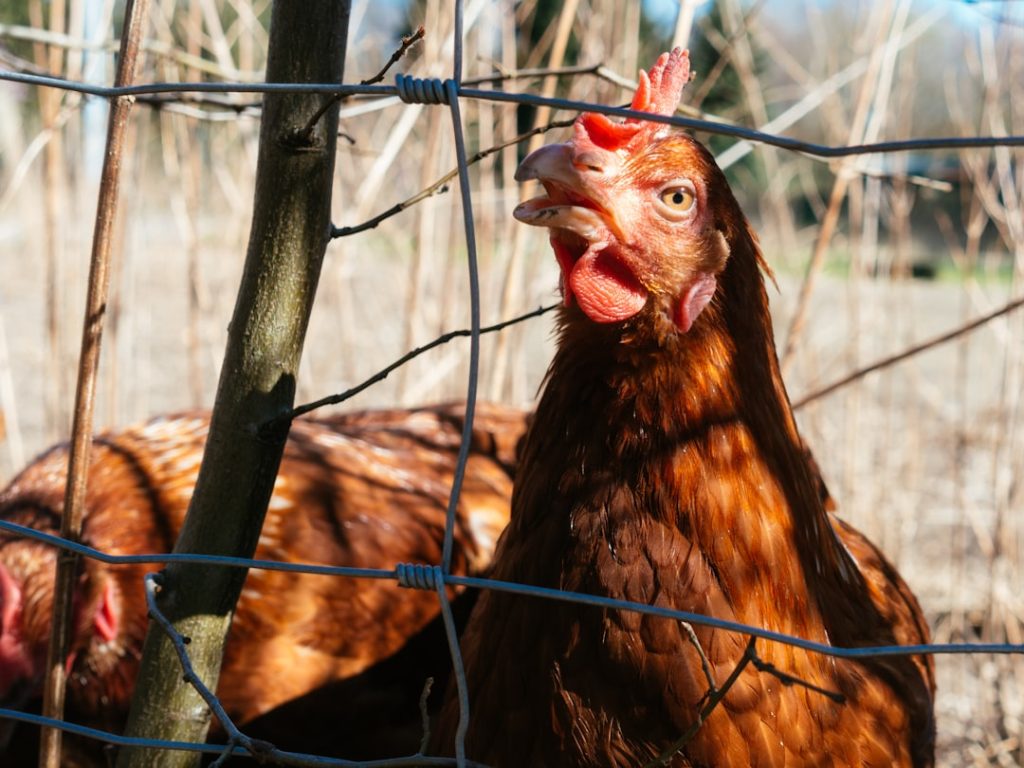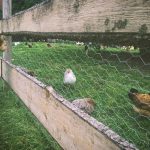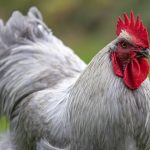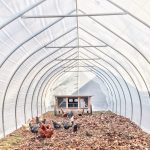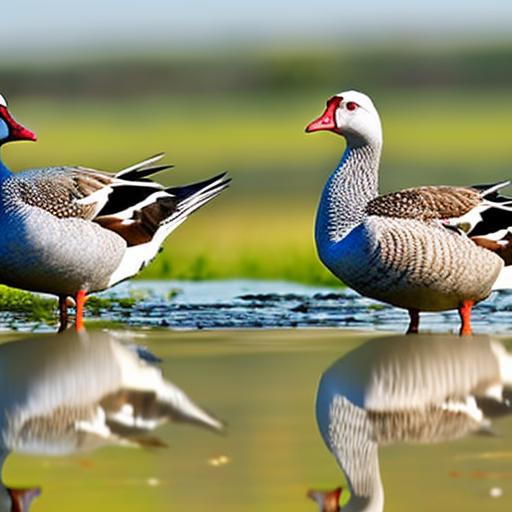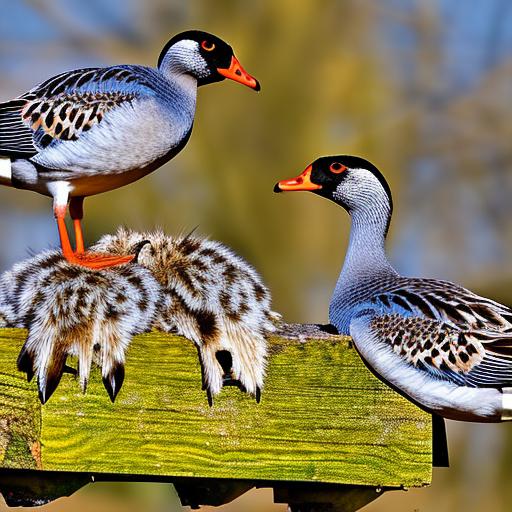Maintaining a secure environment for chickens is essential for their welfare and the safety of surrounding animals and people. Chickens are natural foragers and may wander into hazardous areas if not properly contained. They are also vulnerable to predators such as foxes, raccoons, and birds of prey, necessitating a secure enclosure for protection.
Keeping chickens in a fenced area prevents damage to gardens, lawns, and other areas where they might cause disruption. A secure fence also helps establish boundaries and prevent conflicts with neighbors or other animals. Chickens are social animals that thrive in a secure and stable environment.
Providing them with a safe, enclosed space reduces stress and anxiety, positively impacting their overall health and productivity. A secure fence helps prevent the spread of diseases and parasites by limiting contact with wild animals and other potential carriers. It also allows chickens to exhibit natural behaviors such as scratching, dust bathing, and foraging while protecting them from potential dangers and threats.
By understanding the importance of keeping chickens in a secure area, caretakers can ensure the physical and psychological well-being of their flock. This approach maintains a healthy and harmonious environment for both the chickens and their human caretakers, while also addressing safety concerns and potential conflicts with neighbors or other animals.
Table of Contents
- 1 Choosing the right fencing materials
- 2 Installing a secure fence
- 3 Trimming wings to prevent flight
- 4 Providing enrichment and distractions within the fenced area
- 5 Monitoring and adjusting the fence as needed
- 6 Seeking professional advice if issues persist
- 7 FAQs
- 7.1 What are some methods to keep chickens from flying out of a fence?
- 7.2 How can I clip my chickens’ wings to prevent them from flying out of the fence?
- 7.3 What type of netting or wire can I use to cover the top of the fence to prevent chickens from flying out?
- 7.4 Why is it important to provide a covered area for chickens to roam?
Key Takeaways
- Keeping chickens in a secure fenced area is important for their safety and well-being
- Choose fencing materials that are sturdy and can withstand the elements
- Proper installation of the fence is crucial to prevent predators from getting in
- Trimming chicken wings can prevent them from flying over the fence
- Providing enrichment and distractions within the fenced area can keep chickens happy and content
- Regularly monitor and adjust the fence as needed to ensure its effectiveness
- Seek professional advice if issues with the fence or chicken safety persist
Choosing the right fencing materials
When it comes to choosing the right fencing materials for keeping chickens, there are several factors to consider. First and foremost, the fencing material should be strong and durable enough to withstand the attempts of predators to break through or climb over it. Additionally, the material should be able to withstand the elements, such as rain, wind, and sun exposure, without deteriorating or rusting over time.
Another important consideration is the visibility of the fencing material, as it should be easy for both humans and chickens to see through in order to monitor the flock and prevent any potential hazards. Furthermore, the fencing material should be easy to clean and maintain in order to ensure a hygienic environment for the chickens. Overall, choosing the right fencing materials for keeping chickens is essential for providing a secure and safe environment for the flock.
In addition to strength and durability, the fencing material should also be able to provide adequate ventilation and airflow for the chickens. This is particularly important in hot climates where proper ventilation can help to prevent heat stress and respiratory issues. Moreover, the fencing material should be able to provide protection from both ground-based predators such as foxes and raccoons, as well as aerial predators such as hawks and owls.
Additionally, the fencing material should be tall enough to prevent chickens from flying over it, while also being buried deep enough into the ground to prevent predators from digging underneath it. Lastly, the fencing material should be non-toxic and safe for both humans and animals in order to prevent any potential health hazards. By considering these factors when choosing the right fencing materials for keeping chickens, you can ensure that the flock is provided with a secure and safe environment.
Installing a secure fence
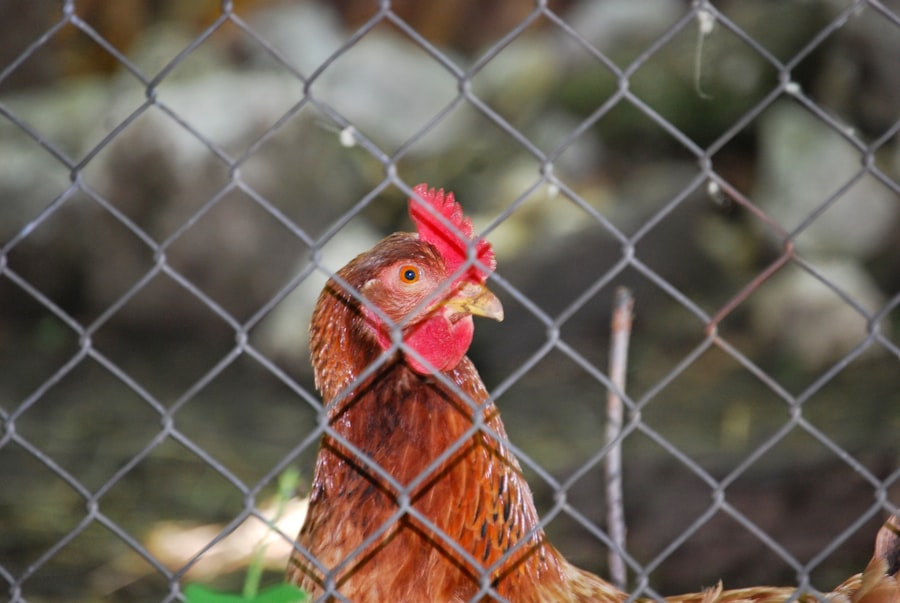
Installing a secure fence for keeping chickens involves careful planning and attention to detail in order to ensure its effectiveness. The first step is to determine the perimeter of the fenced area based on the number of chickens and the available space. It is important to consider factors such as adequate space for the chickens to move around, access to sunlight, and protection from harsh weather conditions.
Once the perimeter is established, it is essential to choose sturdy fence posts that can support the weight of the fencing material and withstand external forces such as wind or attempts by predators to break through. Additionally, it is important to ensure that the fence posts are securely anchored into the ground to prevent them from being knocked over or pulled out by animals or environmental factors. After installing the fence posts, the next step is to attach the fencing material securely to create a continuous barrier around the perimeter.
This may involve using wire mesh, chicken wire, or other suitable materials that are strong enough to withstand attempts by predators to break through or climb over. It is important to ensure that there are no gaps or weak points in the fencing material that could compromise its effectiveness. Additionally, it is essential to consider factors such as access points for humans to enter and exit the fenced area, as well as gates or doors that can be securely closed to prevent unauthorized access by predators or other animals.
Overall, installing a secure fence for keeping chickens requires careful planning and attention to detail in order to provide a safe and protected environment for the flock. In addition to installing a secure fence around the perimeter of the chicken coop or run, it is also important to consider additional measures such as predator-proofing the coop itself. This may involve reinforcing doors and windows with strong locks or latches, as well as using predator-proof materials such as hardware cloth or heavy-duty wire mesh to prevent predators from gaining access through small openings.
Additionally, it is important to regularly inspect the fence and coop for any signs of damage or wear and tear, and to make any necessary repairs or adjustments as needed. By taking these additional measures into consideration when installing a secure fence for keeping chickens, you can ensure that the flock is provided with a safe and protected environment.
Trimming wings to prevent flight
One effective way to prevent chickens from flying over a fence is by trimming their wings. This involves carefully clipping the primary feathers on one wing of each chicken in order to disrupt their balance and prevent them from achieving lift when attempting to fly. It is important to note that wing trimming should be done with caution and precision in order to avoid causing any pain or injury to the chickens.
Additionally, it is essential to only trim one wing of each chicken in order to maintain their ability to move around freely while preventing them from achieving flight. By trimming their wings in this manner, you can effectively prevent chickens from flying over a fence while still allowing them to exhibit natural behaviors such as perching and roosting. Another method for preventing flight over a fence is by using deterrents such as netting or overhead barriers that can prevent chickens from gaining enough height or momentum to fly over.
This may involve installing netting or wire mesh over the fenced area or using other physical barriers such as angled panels or overhangs that can prevent chickens from achieving lift when attempting to fly over. Additionally, it is important to regularly inspect these deterrents for any signs of damage or wear and tear, and to make any necessary repairs or adjustments as needed. By using these methods in combination with wing trimming, you can effectively prevent chickens from flying over a fence while still allowing them to exhibit natural behaviors within their enclosed environment.
Providing enrichment and distractions within the fenced area
In addition to providing a secure fenced area for keeping chickens, it is important to consider ways of providing enrichment and distractions within the enclosed environment in order to promote their physical and psychological well-being. This may involve providing items such as perches, roosts, dust bathing areas, and natural vegetation that can encourage natural behaviors such as scratching, pecking, and foraging. Additionally, it is important to provide toys or other items that can serve as distractions for the chickens in order to prevent boredom or stress.
By providing enrichment and distractions within the fenced area, you can help to promote a stimulating and engaging environment for the flock while also reducing potential behavioral issues such as feather pecking or aggression. Another way of providing enrichment within the fenced area is by allowing chickens access to different areas or environments within their enclosure. This may involve creating separate zones for activities such as feeding, resting, dust bathing, or exploring in order to provide variety and stimulation for the flock.
Additionally, it is important to regularly rotate or introduce new items or features within the fenced area in order to keep things interesting for the chickens. By providing enrichment in this manner, you can help to promote natural behaviors and reduce potential stress or boredom within the enclosed environment. Overall, providing enrichment and distractions within the fenced area is essential for promoting the physical and psychological well-being of chickens while also reducing potential behavioral issues.
Monitoring and adjusting the fence as needed
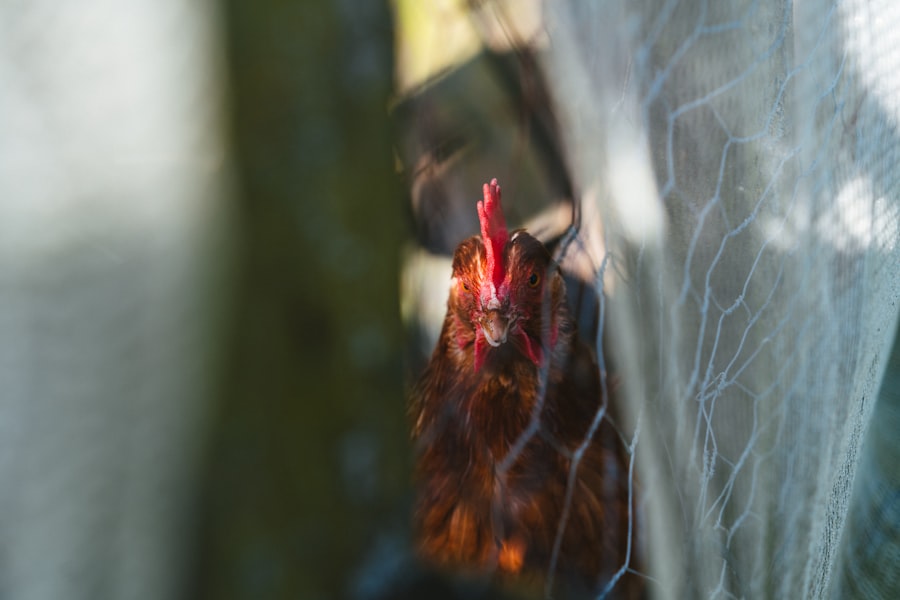
Once a secure fence has been installed for keeping chickens, it is important to regularly monitor its effectiveness and make any necessary adjustments as needed. This may involve inspecting the fence for any signs of damage or wear and tear caused by environmental factors or attempts by predators to break through or climb over it. Additionally, it is important to check for any potential weak points or gaps in the fencing material that could compromise its effectiveness.
By regularly monitoring the fence in this manner, you can identify any potential issues early on and make any necessary repairs or adjustments before they become more serious. In addition to monitoring the fence itself, it is also important to observe the behavior of the chickens within their enclosed environment in order to assess their overall well-being and security. This may involve observing their interactions with each other, their use of different areas within the enclosure, and any signs of stress or anxiety that may indicate potential issues with the fence or their environment.
By regularly monitoring the behavior of the chickens in this manner, you can identify any potential issues early on and make any necessary adjustments in order to promote their well-being and security within their enclosed environment.
Seeking professional advice if issues persist
If issues with keeping chickens within a fenced area persist despite taking all necessary precautions and measures, it may be necessary to seek professional advice in order to address any underlying issues or concerns. This may involve consulting with experienced poultry keepers or animal behaviorists who can provide insights into potential causes of issues such as escape attempts or behavioral problems within an enclosed environment. Additionally, it may be helpful to consult with professionals who specialize in predator control or fencing solutions in order to identify any potential weaknesses in the existing setup and make any necessary improvements.
In some cases, seeking professional advice may also involve consulting with veterinarians or animal health experts who can provide insights into potential health issues or concerns that may be affecting the behavior or well-being of the chickens within their enclosed environment. By seeking professional advice in this manner, you can gain valuable insights into potential causes of issues with keeping chickens within a fenced area and receive expert guidance on how best to address them effectively. Overall, seeking professional advice if issues persist with keeping chickens within a fenced area can help to identify underlying causes and find effective solutions in order to promote their safety and well-being within their enclosed environment.
In conclusion, understanding the importance of keeping chickens in a secure fenced area is essential for their safety and well-being while also promoting a harmonious environment for both the chickens and their human caretakers. Choosing the right fencing materials involves careful consideration of factors such as strength, durability, visibility, ventilation, protection from predators, and safety for both humans and animals. Installing a secure fence requires careful planning and attention to detail in order to provide a safe and protected environment for the flock while also considering additional measures such as predator-proofing the coop itself.
Trimming wings can effectively prevent flight over a fence while still allowing chickens to exhibit natural behaviors such as perching and roosting. Providing enrichment and distractions within the fenced area is essential for promoting the physical and psychological well-being of chickens while also reducing potential behavioral issues. Monitoring and adjusting the fence as needed involves regular inspections of its effectiveness as well as observing the behavior of the chickens within their enclosed environment.
Seeking professional advice if issues persist can help identify underlying causes of problems with keeping chickens within a fenced area while finding effective solutions in order to promote their safety and well-being within their enclosed environment.
If you’re looking for more tips on keeping chickens safe and secure, you might be interested in this article on building a farmhouse chicken coop. This resource provides valuable information on creating a sturdy and comfortable living space for your chickens, which can help prevent them from flying out of the fence.
FAQs
What are some methods to keep chickens from flying out of a fence?
Some methods to keep chickens from flying out of a fence include clipping their wings, using netting or wire over the top of the fence, and providing a covered area for the chickens to roam.
How can I clip my chickens’ wings to prevent them from flying out of the fence?
To clip a chicken’s wings, you can gently catch the chicken and trim the primary feathers on one wing. This will make it difficult for the chicken to achieve lift and fly over the fence.
What type of netting or wire can I use to cover the top of the fence to prevent chickens from flying out?
You can use poultry netting or hardware cloth to cover the top of the fence. This will prevent the chickens from flying over the fence while still allowing them to roam freely within the enclosed area.
Why is it important to provide a covered area for chickens to roam?
Providing a covered area for chickens to roam allows them to still have access to the outdoors while preventing them from flying out of the fence. This can be achieved by building a covered run or using portable chicken coops with attached runs.
Meet Walter, the feathered-friend fanatic of Florida! Nestled in the sunshine state, Walter struts through life with his feathered companions, clucking his way to happiness. With a coop that’s fancier than a five-star hotel, he’s the Don Juan of the chicken world. When he’s not teaching his hens to do the cha-cha, you’ll find him in a heated debate with his prized rooster, Sir Clucks-a-Lot. Walter’s poultry passion is no yolk; he’s the sunny-side-up guy you never knew you needed in your flock of friends!

